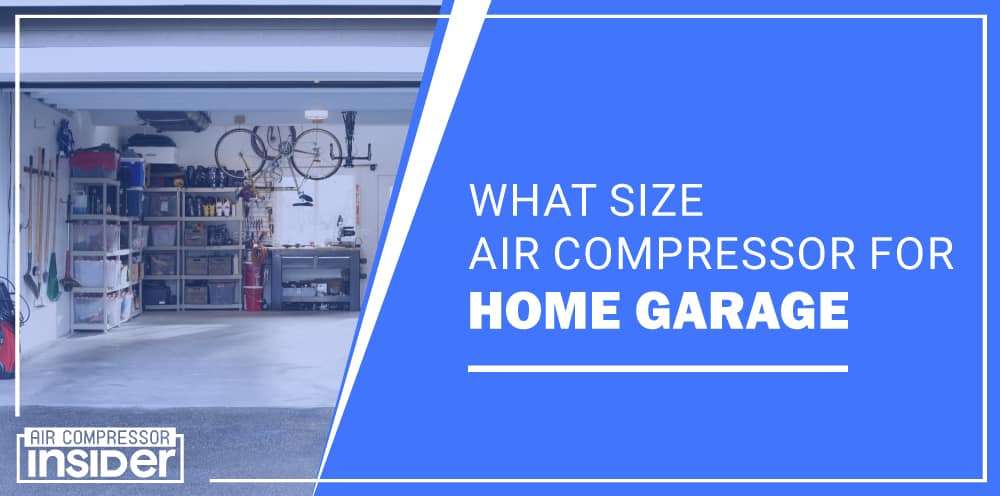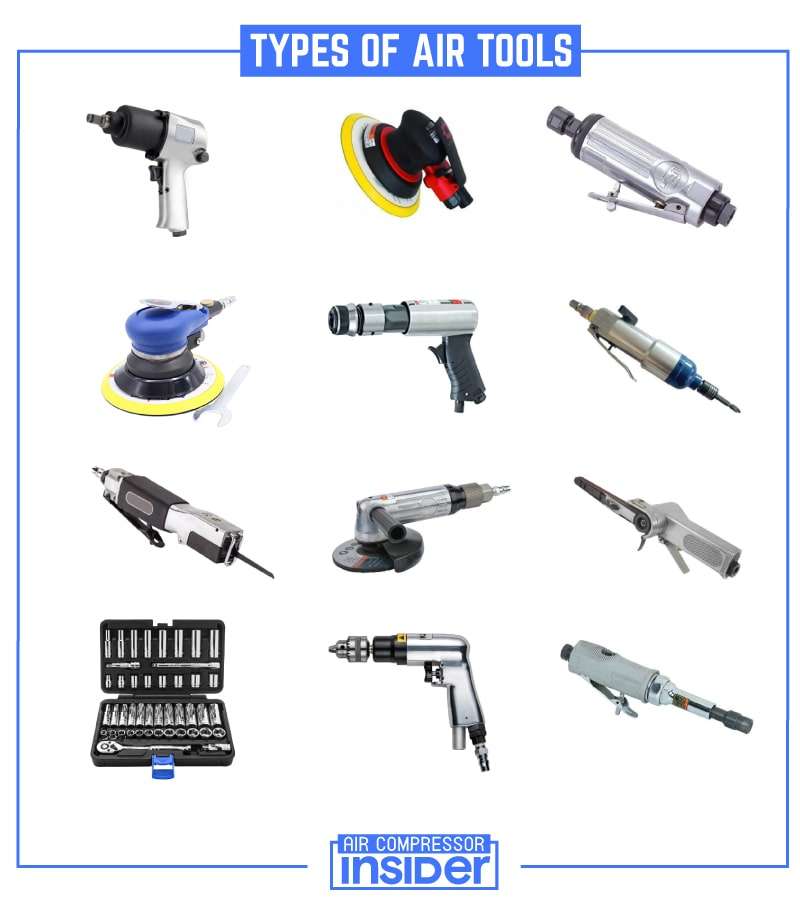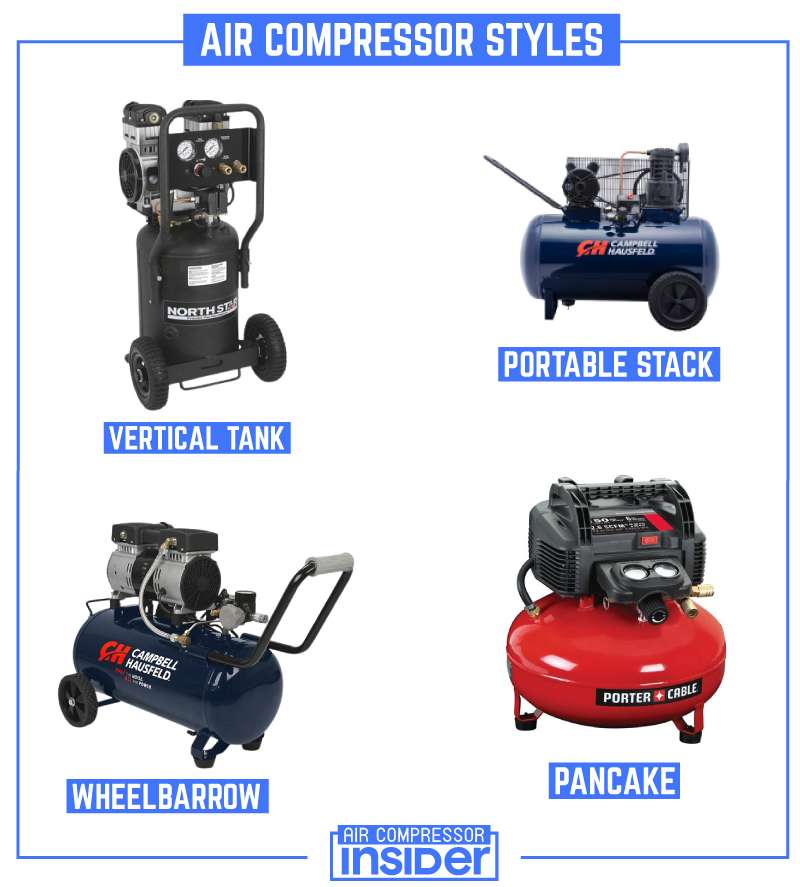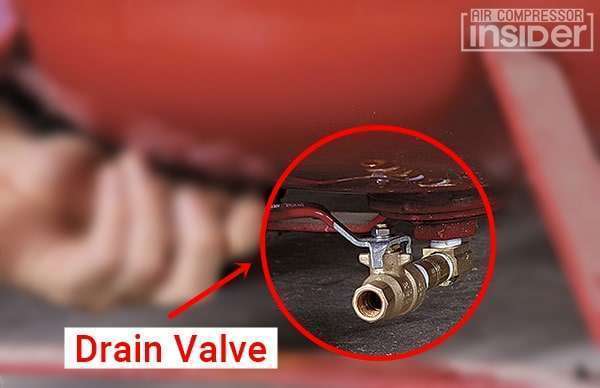Air compressors are used in home garage for many different tasks such as inflating a tire, operating a nail gun or impact wrench, refilling a Co2 tank, and much more. We find many new ways to utilize our air compressor to make our lives easier with every passing day. You can even blow out your sprinkler system with an air compressor!

What Size Air Compressor For Home Garage
Choosing an air compressor for home garage to perform any task requires you to understand a few key things. You need to know the required CFM, PSI, and the size of air compressor.
Also you have to consider about the portability of the air compressor. Air compressors produces compressed air, generated by an engine or a motor. This compressed air is then used to run various pneumatic tools to perform various tasks. When choosing the home garage air compressor, we always recommend portable air compressors with vertical tanks.
Air Compressor for Home Garage

The size and requirement of best air compressor for home garage depends on multiple factors. For knowing the required size of air compressor for your home garage, the first step is making a list of all the tasks you want to perform with you air compressor. And also list down all the air tools that you will run with your air compressor. Now start listing down the requirements of every air tool you will use with your air compressor.
Below, we will discuss all the aspects and key points to consider while choosing an air compressor for your home garage.
Key points to consider:
1. Air Tool Types
2. Air Compressor Style
3. Power Source
4. Frequency of use
5. Tank Size
6. CFM
7. Horse Power
8. PSI Air Pressure
1. Air Tool Types:

The first and the most important thing to do before picking an air compressor for home garage is to make a list of all the pneumatic tools you are going to use with your air compressor. Because the type of air tools you typically use is a main factor influencing the size of air compressor you need for your home garage.
As we discussed above, first you should make a list of all the air tool types you’ll be using with your air compressor, how often you’ll use them and the number of tools in use at any time during your air compressor’s duty cycle. A duty cycle of an air compressor refers to the time it takes for an air compressor to sense its tank capacity is getting low until the time it’s able to recharge the reservoir again.
Specific pneumatic tools require a lot more CFM and PSI rating than others. For instance, a large air-driven framing nailer needs more air supply than a small plasma cutter. A continuously operating paint sprayer requires more CFM than a small single-use air stapler.
2. Air Compressor Style:

Another key factor while picking an air compressor is its style, which most of the people ignore, and then later they find it difficult to use it properly in their home garage. This is why one of the first things you have to decide is what style and type of air compressor you want.
Most commonly used air compressors come with around 4-8 gallon tanks. These air compressors offer an excellent amount of airflow and are quicker to refill the tank. These are in different styles, such as:
1. Pancake-Style
2. Wheelbarrow-Style
3. Standing Vertical Tank
4. Portable Stack or Hotdog Style Tank
1. Pancake-Style: Some people like to have a pancake compressors (as shown in image above), but it never include wheels and have a lower center of gravity and a wider base for use on roofs or anywhere you don’t want it to roll away. Many people keep pancake air compressor in their cars to inflate car tires. But we never recommend to pick a pancake air compressor for your home garage.
2. Wheelbarrow-Style: Another style of air compressor which is commonly used is called wheelbarrow-style (as shown in image above). But this style of air compressor is mostly used for commercial purposes, by people who want to use it for some part-time jobs, and have to move it from place to another
3. Standing Vertical Tank: Some people like to have a standing tank air compressor in their home garage that never moves from the corner of their garage. Standing tanks air compressors (as shown in image above) are then used with longer air hoses that can get you just about anywhere you want. Standing tank air compressors take up a permanent place in your home garage, so you lose some flexibility when it comes to garage storage.
4. Portable Stack or Hotdog Style Tank: While some people want a portable stack air compressor (as shown in image above) in their home garage. Portable stack air compressors always gives you an edge over standing air compressors, because if you plan to take your air compressor on the road to do a job, that standing tank won’t help much.
When choosing the best air compressor for home garage, we always recommend going for a standing tank air compressor with big wheels. This style not only enables you to keep it on a side of your home garage, but at the same time, its big wheels make it easier for you to move it around your home garage or you can even move it on road or terrain.
But before choosing the air compressor style, also make sure to have a look on the list of air tools you are going to use with it, to understand your particular needs.
3. Power Source:

There are two types of power supply options in an air compressor:
– Electric Powered
– Gas Powered
Electric Powered: Most commonly used air compressors are powered by electricity. Electric air compressors are very popular in home garages due to its convenience, cleanliness and quieter operations.
In electric-powered air compressors, there is an electric motor which drives a separate compressor unit. Most home garage electric compressors operates on 115-volt, 20-amp current.
Gas Powered: Gas-powered air compressors engines are excellent options for portable air compressors used on job sites where the power grid isn’t handy.
However, gas air compressors are not your best solution for a home garage situation. They are louder, than and not as clean as electric powered air compressors.
Usually gas-powered air compressors generate lot of exhaust fumes, which requires adequate ventilation to prevent health hazards from using gas-powered air compressor in an enclosed space or in your home garage.
4. Frequency of Use:
Frequency of use is another important point to keep in mind when choosing an air compressor for home garage.
If you want to use it for some woodworking tasks, then you will need light-duty pneumatic tools like brad nailer, impact wrench etc. These air tools required less-capacity air compressors.
But if you are a part-time paint worker, and want to use it for painting purposes, then obviously you will need higher-capacity air compressors, with larger gallon tanks.
5. Tank Size:
The tank size of an air compressor is an important aspect to keep in mind while picking it for home garage.
Smaller tanks don’t have enough air volume CFM (cubic feet per minute) to operate high-duty pneumatic tools, which requires continuous air flow for a longer period of time, such as paint gun.
If you want to use your air compressor in home garage for smaller tasks, such as running an impact wrench, or a nailer gun, then a smaller tank air compressor will be sufficient too.
But you cannot pick an air compressor with a smaller tank size for your home garage, if you want to use it for heavy-duty tasks, such as for painting purposes.
Because paint sprayer will start to strain as the smaller tank will run out of air while you are using it non-stop, wishing to cover the whole vehicle at once for smooth, clearer paint.
So, a smaller tank will need to be refilled several times for various painting tasks. Another issue while using a smaller 15-20 gallons tank for painting purposes is that your air compressor will get hot because of constant running. As a result, the compressor will start building water in the tank, which must drain once in a while.
Drain your compressor after covering each side of the car to be safe.
How to drain your Air Compressor?
First of all, turn off your compressor and let it cool down for a few minutes. Now unscrew the drain valve of the air compressor.
It usually is a ¼ inch round brass fitting. You will find it under the belly of your air compressor tank. (as shown in the image below)

Open this water release valve by turning it in an anti-clockwise direction. You can turn the valve with a pair of pliers. You will hear a sudden sound of releasing pressurized air stored in the tank.
Wait until all the condensation and pressurized air bleed out. Once you are sure that all air is drained, now firmly turn back the water-release valve in a clockwise direction to close it back.
6. CFM (Cubic Feet per Minute):
CFM (Cubic feet per minute) is the volume of air generated in one minute by an air compressor.
As we just discussed above, smaller tanks don’t have enough air volume CFM to run pneumatic tools for longer period of time. Therefore, higher CFM is required to paint a car efficiently.
CFM (Cubic Feet per Minute) is the volume of air delivered in one minute from an air compressor. As we just discussed above, smaller tanks don’t have enough air volume CFM to run pneumatic tools for longer period of time.
Therefore, bigger tank is required for high-duty tasks, such as painting a car. Whereas, for performing smaller tasks, such as running a finish nailer, or impact wrench, you don’t need a ton of airflow or CFM. So for such tasks, an air compressor with a smaller tank will also suffice.
However ideally, if you want the best air compressor for your home garage, you have to pick one which can support the use of air tools like pneumatic air guns, paint gun and impact gun. These air tools require considerably more airflow or CFM.
For your convenience, below we are sharing a CFM chart of all commonly used air tools.

7. HP (Horse Power):
Horsepower (HP) is the amount of work that an air compressor can do. Higher HP does not necessarily mean it is better for every tool.
The required HP to run a specific pneumatic tool is mentioned on every tool. For example, a 10 HP air compressor is recommended for painting a car. However, higher HP air compressors may operate more efficiently and be used for other tasks.
So as we discussed earlier, you have to make a list of all air tools you want to run with your air compressor. So that you can understand the minimum and maximum required HP for each air tool.
8. PSI (Pounds per Square Inch) Air Pressure:
PSI (pounds per square inch) is a measurement of air pressure delivered by an air compressor. The higher the PSI, higher will be the air volume that can be compressed into a tank.
When we talk about PSI ratings, most air compressors handle the requirement of air pressure for all basic pneumatic tools. Most of the tools operate around 90 PSI. This is why you may see most of the air compressors rated at 90 PSI for the airflow (SCFM) ratings.
Whereas, some air tools like framing nailers required a bit more PSI for maximum penetration into hard materials like LVL and other similar materials. Framing nailers requires around 100-20 PSI.
As a rule-of-thumb, it is a good idea to add 10% to 20% above your anticipated limit. This is for any unexpected draw and also if you want to add any other air tool in future.
Final Words:
As we discussed everything in detail above, there are many factors that determines the ideal required size air compressor for home garage.
But there is also a simple formula to calculate best air compressor for home garage.
Formula To Calculate Ideal Air Compressor For Your Home Garage:
The best formula for calculating the right size home air compressor is to add up the CFM requirement for all the air tools you intend to use.
After that, now identify the peak PSI each air tool needs. This gives you the upper limit of the required capacity in CFM, the required PSI pressure, and also the required tank size in gallons.
